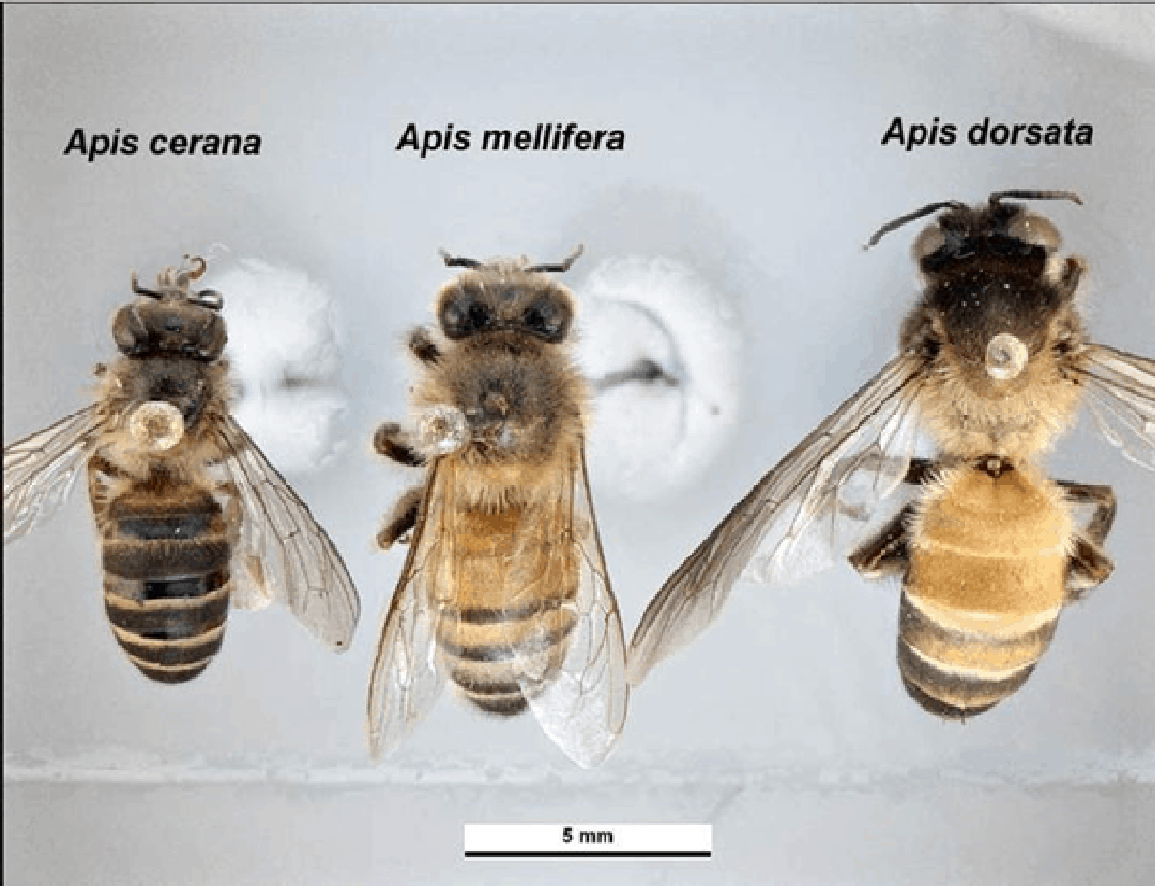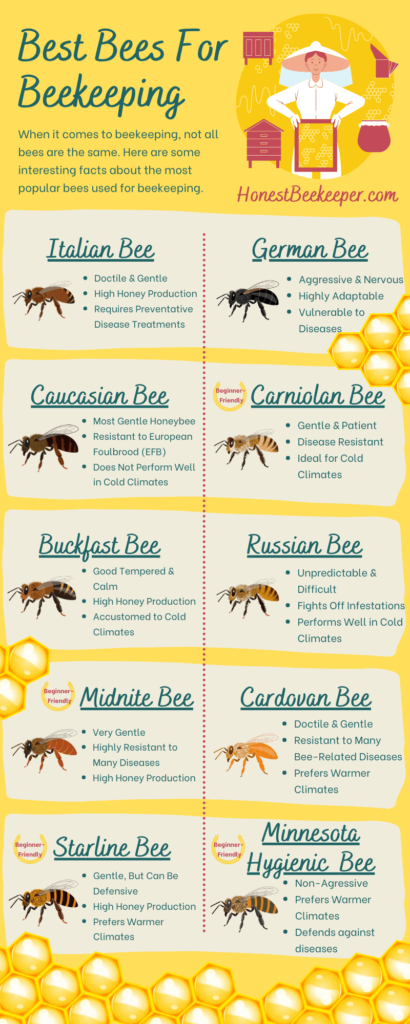
Have you ever wondered about the different types of bees buzzing around in your garden? From honey bees to bumblebees to solitary bees, the world of bees is incredibly diverse. In this informative guide, we will take you through the various bee species, their characteristics, and how to choose the right bees for your specific needs. Whether you’re a keen gardener or simply curious about our buzzing friends, get ready to explore the fascinating world of bees and discover which species is the perfect fit for you!
Understanding the Importance of Bee Species
Bees play a vital role in the process of pollination, which is crucial for the reproduction of many plant species. They are responsible for transferring pollen from the male part of a flower to the female part, fertilizing the flower and allowing it to produce seeds or fruit. This process is essential for the production of our food, as well as for maintaining the biodiversity of our ecosystems.
The role of bees in pollination
Bees are among the most effective pollinators due to their unique physical characteristics and foraging behaviors. Their hairy bodies and bristly legs allow them to easily pick up and transport pollen from flower to flower. Additionally, bees are attracted to the sweet nectar that flowers produce as a reward, which encourages them to visit numerous flowers and facilitate cross-pollination.

The impact of bee species on pollination success
Different bee species have varying levels of pollination effectiveness. Some species are better suited for certain types of flowers, while others may have longer foraging distances or more efficient pollination techniques. The choice of bee species can greatly impact the success and efficiency of pollination in your garden or farm.
Factors to Consider When Choosing Bee Species
When selecting the right bee species for your specific needs, several factors should be taken into consideration.
Climate suitability
Different bee species have different preferences in terms of temperature and climate. It is important to choose bee species that can thrive in your particular region to ensure their survival and productivity.
Flower preferences
Various bee species have preferences for specific types of flowers. Some bees may be more attracted to certain colors or shapes, while others may show a preference for certain types of nectar or pollen. Consider the flowers and plants you have in your area and select bee species that are known to be effective pollinators for those particular plants.
Foraging distance
The distance bees are willing to travel for food can vary greatly between species. Some bees may have a limited foraging range, while others are capable of covering longer distances. Understanding the foraging habits of different bee species will help you determine which ones are best suited for your landscape or crop field.
Nesting habits
Bees have different nesting requirements, with some species preferring to nest in cavities such as hollow trees or holes in the ground. Others may construct their nests out of mud or use existing structures like abandoned rodent burrows. By knowing the nesting preferences of different bee species, you can provide suitable habitats that encourage their presence.
Colony size and behavior
Bee species vary in terms of colony size and social structure. Some bees, like honeybees, live in large colonies with a complex division of labor, while others, such as solitary bees, lead more independent lives. Understanding the behavior and spatial needs of different bee species will help you determine whether their characteristics align with your goals and resources.
Popular Bee Species for Different Environments
The choice of bee species should also take into account the specific environmental conditions in your region. Here are some popular bee species for different environments.
Temperate regions
In temperate regions, honeybees (Apis mellifera) are the most commonly kept bee species. They are well-adapted to cooler climates and have a broad flower preference, making them excellent generalist pollinators. Bumblebees (Bombus spp.) are also prevalent in temperate regions and are highly effective at pollinating certain crops.
Tropical regions
In tropical regions, bumblebees are again a popular choice due to their adaptability and efficiency as pollinators. Additionally, some species of stingless bees, such as Melipona spp. and Trigona spp., are commonly kept in tropical areas for their unique pollination services.
Desert regions
Desert regions typically have unique challenges for beekeeping due to the extreme temperature and arid conditions. However, certain species like the alfalfa leafcutter bee (Megachile rotundata) have been successfully introduced for crop pollination in these areas.
Common Bee Species and Their Characteristics
Understanding the characteristics of common bee species can help you make informed decisions when choosing the right bees for your needs.
Honeybees (Apis mellifera)
Honeybees are social insects that live in large colonies. They are known for their production of honey and are highly efficient pollinators due to their constant foraging activity and flower preferences. Honeybees also have the unique ability to communicate the location of food sources to other colony members through a complex dance language.
Bumblebees (Bombus spp.)
Bumblebees are characterized by their larger size and fuzzy appearance. They are excellent pollinators, particularly for plants that require buzz pollination, where the bee vibrates its flight muscles to release large quantities of pollen. Bumblebees are also known for their ability to regulate their body temperature, allowing them to forage earlier and later in the day than many other bee species.
Mason bees (Osmia spp.)
Mason bees are solitary bees that construct nests out of mud or existing cavities. They are valuable pollinators for fruit trees and berry crops, as they are highly efficient and easily attracted to nesting materials and flower species.
Leafcutter bees (Megachile spp.)
Leafcutter bees get their name from their habit of cutting small, circular pieces of leaves to construct their nests. They are also solitary bees and are effective pollinators for crops like alfalfa and some fruits and vegetables.
Carpenter bees (Xylocopa spp.)
Carpenter bees are known for their ability to excavate and nest in wood. While they may cause damage to wooden structures, they also play a role in pollination, particularly for plants with tubular flowers.

Considering Beekeeping Regulations and Restrictions
before starting beekeeping, it is important to be aware of any local ordinances, state and federal regulations, and permit requirements that may be in place. These regulations aim to ensure the safety and well-being of both the bees and the human population.
Local ordinances
Some municipalities have specific regulations regarding the location and number of beehives allowed on residential or urban properties. It is important to familiarize yourself with these regulations to avoid any conflicts in your community.
State and federal regulations
Certain states or countries may have regulations in place to prevent the spread of diseases and pests that can affect bee populations. These regulations may include requirements for hive inspections, transportation of bees, and treatment protocols.
Permit requirements
Depending on the location and scale of your beekeeping operation, you may need to obtain permits or licenses. These permits typically cover aspects like apiary registration, honey extraction, or selling bee products.
Availability and Sourcing of Bee Species
To acquire bee species for your beekeeping or pollination needs, there are several sources you can consider.
Beekeeping associations and clubs
Local beekeeping associations and clubs are a valuable resource for information and networking. They often have connections to reputable suppliers and breeders, as well as experienced beekeepers who can provide guidance and support.
Local suppliers and breeders
Many beekeepers and suppliers specialize in breeding and selling specific bee species. They can provide you with healthy and genetically diverse bees that are suitable for your specific needs and environment.
Online resources
The internet offers a wealth of information and resources for sourcing bee species. Online marketplaces, beekeeping forums, and websites dedicated to beekeeping provide opportunities to connect with sellers, access educational materials, and learn from experienced beekeepers.

Bee Species for Pollination Services
In addition to beekeeping, certain species of bees can be utilized specifically for their pollination services to optimize productivity in agricultural or horticultural settings.
Specialized pollinators for specific crops
Some crops, such as tomatoes or cranberries, require specific pollinators for efficient fertilization. For example, bumblebees are excellent pollinators for many tomato varieties due to their ability to perform buzz pollination, which helps release the pollen from the flower’s anthers.
Maximizing pollination efficiency
Choosing bee species that are well adapted to the specific plants you are cultivating can greatly increase pollination efficiency. For example, orchard mason bees (Osmia lignaria) are highly efficient pollinators for fruit trees and can significantly improve fruit set and quality.
Understanding Beekeeping and Hive Management
If you decide to engage in beekeeping, it is essential to have a good understanding of basic beekeeping principles and practices to ensure the well-being of your bees.
Basic beekeeping equipment
Beekeeping requires certain tools and equipment to properly care for the bees and manage the hives. Some necessary items include protective clothing, hive boxes, frames, hive tools, and smokers, among others. Familiarize yourself with these essential beekeeping supplies to start on the right foot.
Understanding bee behavior and needs
Bees have specific behaviors and requirements that must be met for their overall health and productivity. Understanding their life cycle, feeding habits, and communication methods will enable you to provide an environment that meets their needs and encourages successful colony development.
Hive maintenance and inspection
regular hive inspections and maintenance are crucial for detecting and preventing issues that can negatively affect the bees. This includes monitoring for signs of disease or pests, ensuring an adequate food supply, and maintaining a clean and well-ventilated hive environment. Regular inspections also allow for the identification of potential swarm events, which can be managed to prevent loss or disruption.

Bee Species and Conservation Efforts
The decline of bee populations worldwide has raised concerns about the ecological and agricultural impact of this loss. Supporting bee species and their habitats is vital for their conservation and the important role they play in pollination.
Endangered bee species
Many bee species are currently at risk of extinction due to habitat loss, pesticide use, climate change, and other factors. Efforts to protect and conserve these endangered species are essential to maintaining biodiversity and ecosystem stability.
Supporting bee habitats and forage
Creating and preserving bee-friendly habitats is a key strategy for supporting bee populations. Planting native flowers and providing nesting resources such as bee houses, wildflower meadows, and hedgerows can help ensure a healthy and abundant food supply for bees.
Reducing pesticide usage
The use of pesticides, particularly those known to be harmful to bees, should be minimized or eliminated to protect bee populations. Adopting organic farming practices and implementing integrated pest management strategies can reduce pesticide exposure and support bee health.
Conclusion
Choosing the right bee species is crucial for successful pollination, whether you are a farmer, a gardener, or a conservationist. By considering factors such as climate suitability, flower preferences, foraging distance, nesting habits, colony size, and behavior, you can make informed decisions that will benefit both the bees and your desired goals. With the right choice of bee species, appropriate beekeeping practices, and support for conservation efforts, we can all contribute to the preservation of these essential pollinators and the health of our ecosystems.
